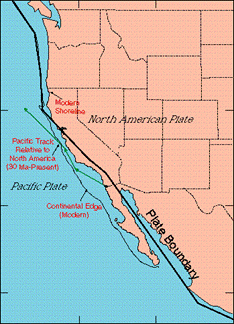|
Serpentinite Rock Formation
|
|
|
Serpentinite is California’s State Rock. It varies in color, from apple-green to black and has a shiny, wax-like appearance with a soapy or greasy texture. It can be found throughout California’s mountain ranges, especially the Klamath Mountains, the Coastal Range, and the Sierra Nevadas. The geologic origin of serpentine is still debated among scientists. The generally accepted theory is that serpentinite is created through a high pressure and a low temperature metamorphism of mantle rock or oceanic crustal rock. It should be noted that serpentinite is the rock, while serpentine is the soil which results from weathering rock, and carries its unique mineral components.
In the metamorphic process pre-existing rocks undergo high temperatures and pressure within the Earth to produce new rocks with a new mineralogy and a new texture. Metamorphic changes occur in the solid state (they do not get hot enough to melt, or the resulting rock would be considered igneous.) The process of metamorphism creates new minerals from the rearrangement of pre-existing mineral components within the surrounding rocks or material.
Serpentinite rock found on Cal Poly land photo by William Holland
Serpentinite gets its attractive green color from the mixture of certain elements. Scientists believe that serpentinite is formed when very high pressures press together olivine (Mg2SiO4), and water (H2O). The resulting metamorphosed rock is serpentinite (Mg3Si2O5(OH)4), and magnesium oxide (MgO). Serpentinite is created in areas of high pressure but relatively low temperature. These are the exact conditions that exist along fault lines. This is why we have so much serpentinite here in California and on Cal Poly land. There is so much here that it is the California the state rock.
Tectonic plates picture from walrus.wr.usgs.gov/ cencal/P-NAP.html
Fof more information please visit: |



